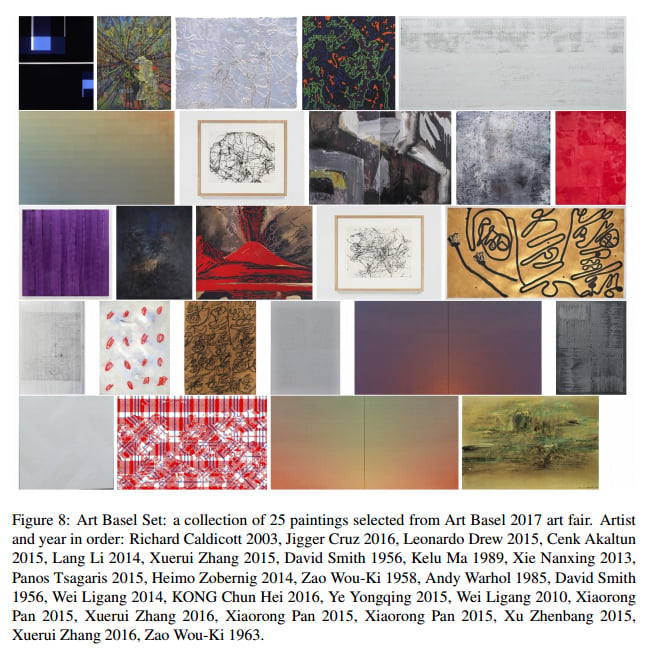Art World
A.I.-Generated Art Now Looks More Convincingly Human Than Work at Art Basel, Study Says
Deep neural networks are learning to make art and the results are impressive.

Deep neural networks are learning to make art and the results are impressive.

Sarah Cascone

Imagine a computer capable of creating original art that looks as human-generated as the work appearing at major art fairs. That’s what a new study from a team at the Art and Artificial Intelligence Lab at Rutgers University is attempting to achieve. Their findings, published in June during the International Conference on Computational Creativity in Atlanta, are impressive.
“Since the dawn of Artificial Intelligence, scientists have been exploring the machine’s ability to generate human-level creative products such as poetry, stories, jokes, music, paintings, etc., as well as creative problem solving,” the paper notes. “The results [of our study] show that human subjects could not distinguish art generated by the proposed system from art generated by contemporary artists and shown in top art fairs.”
The new study builds on two 2015 papers from the Rutgers Art and A.I. lab on an algorithm that was able to identify the artist, genre, and style of works of art—a computer art historian of sorts. The computer had some surprising findings, drawing new connections between compositions painted decades apart by artists working in different styles. It also evaluated works and found that the famed Mona Lisa ranked lower on the creativity scale than other, less well-known works by Leonardo da Vinci.

The CAN-generated most and least thought to be by human artists. Courtesy of the Art and Artificial Intelligence Laboratory, Rutgers University.
For the new study, the laboratory created a modification of the system known as Generative Adversarial Networks (GAN), in which deep neural networks are taught to replicate a number of existing painting styles, such as Baroque, Pointillism, Color Field, Rococo, Fauvism, and Abstract Expressionism. One network generates the images based on what it has been taught, and the other network judges the resulting works.
The new, modified version, Creative Adversarial Networks (CAN), is designed to generate work that does not fit the known artistic styles, thus “maximizing deviation from established styles and minimizing deviation from art distribution,” according to the paper. For the training, they used 81,449 paintings by 1,119 artists in the publicly available WikiArt data set.
“The images generated by CAN do not look likes traditional art, in terms of standard genres (portrait, landscapes, religious paintings, still life, etc.),” notes the paper. The study asked human users to guess whether a human or a computer created four groups of images: those generated by GAN and CAN, as well as historical Abstract Expressionist works and non-figurative work on view at Art Basel in 2016.

Artworks at Art Basel 2016 used in a study about creating art using artificial intelligence. Courtesy of the Art and Artificial Intelligence Laboratory, Rutgers University.
The Abstract Expressionist works rated the highest, with 85 percent of respondents correctly identifying them as the work of a human artist. Users believed that 53 percent of the CAN images were made by people, as compared to only 35 percent of the GAN images, and, interestingly, 41 percent of the Art Basel works.
Where things get interesting, however, is when respondents were asked to rate how intentional, visually structured, communicative, and inspiring the images were. They “rated the images generated by [the computer] higher than those created by real artists, whether in the Abstract Expressionism set or in the Art Basel set.”
Clearly, A.I. isn’t putting artists out of work quite yet, but this new study shows that there may be real artist potential in the world of deep neural networks.